Writing: How We Can Achieve a State of Flow
I recently experienced a loss of writing content when my cloud drive went blank. I was able to recover most of a major project, but other files disappeared into the aether.
Since then, I have made it a priority to develop a better routine in my writing life, including documenting words written per day and always backing up my work. What I have found through this change in habit is that I am finding flow in my writing life.
Mihaly Csikszentmihalyi coined this term in his book Flow: The Psychology of Optimal Experience (HarperCollins, 1990). He defines flow as “the state in which people are so involved in an activity that nothing else seems to matter; the experience itself is so enjoyable that people will do it even at great cost, for the sheer sake of doing it“ (4).
How we arrive at this state of flow is another matter. Csikszentmihalyi makes the point over and over that flow doesn’t naturally occur. We have to be intentional about how we go about our work. Flow is only achieved through the habits one builds in the experience in which they regularly participate.
In this article I offer some suggestions on how writers can find flow in their craft, followed up with applications for our students. I use the traditional steps of the writing process – brainstorming, drafting, revising/editing, publishing – as the framework, although as Dana Murphy points out, writing is often a nonlinear process.
Brainstorming
A lot of my writing starts in my head. Yet these ideas are fleeting. I want to get them documented before they escape my brain. Evernote (www.evernote.com) has been a helpful application for this part of the process. For example, I keep a note titled “Writing Ideas” at the ready on my smartphone and laptop. Each idea is added as the next entry in the note and bulleted with a check box. I check the box when I complete a project.
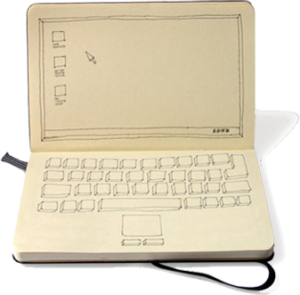 I also keep paper notebooks handy wherever I go. If I am out and about running an errand, I have a pocket-sized Moleskine and pen on me to write down a possible writing idea when it hits me. If I am feeling confident, I will use a larger Moleskine notebook to outline the idea with main points and supporting details. Knowing my initial ideas are located somewhere allows me to move on with my day until I am ready to flesh them out.
I also keep paper notebooks handy wherever I go. If I am out and about running an errand, I have a pocket-sized Moleskine and pen on me to write down a possible writing idea when it hits me. If I am feeling confident, I will use a larger Moleskine notebook to outline the idea with main points and supporting details. Knowing my initial ideas are located somewhere allows me to move on with my day until I am ready to flesh them out.
For students: I am a notebook snob, so don’t feel obligated to buy each of your students a Moleskine. Black and white notebooks can be purchased for $1 apiece at your local dollar store. Demonstrate for students your own process for brainstorming in your writing life. Give them a notebook, offer continuous support, and expect the same.
Drafting
Sometimes my brainstorming leads right into a first draft, what Tom Romano refers to as “the gush.” We need to limit our writing locations when we are ready to put our words down on paper. Otherwise our work can be anywhere and we risk losing our flow. Writing needs channels.
I write on a MacBook Air and my favorite application for drafting is DayOne (http://dayoneapp.com/).
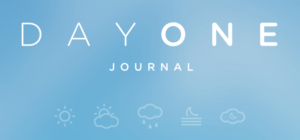 They recently came out with a new version of their iOS app. It’s worth purchasing the upgrade. In this journaling tool, the writer can take their work into full screen and remove all other distractions. DayOne also offers separate journals that are color coded for each type of writing we might explore. If you don’t have a Mac, check out Scrivener for Windows. (There are versions for iOS and Mac, too).
They recently came out with a new version of their iOS app. It’s worth purchasing the upgrade. In this journaling tool, the writer can take their work into full screen and remove all other distractions. DayOne also offers separate journals that are color coded for each type of writing we might explore. If you don’t have a Mac, check out Scrivener for Windows. (There are versions for iOS and Mac, too).
For students: Google Docs (docs.google.com) is a web-based word processor that can work well for our kids’ initial drafts. You can reduce distractions by going to “View” in the menu and selecting “Full Screen Mode.” Students can share their drafts with you via email, and you can offer feedback through the suggestions and commenting features.
Revising/Editing
I have learned that revising and editing my work on a screen is a challenge. I just don’t read as closely as I do as when I have my writing on paper. I invested in a Brother black and white laser jet printer to print off my drafts and keep the costs down. At this stage my mind is free from digital distractions and I can focus on what I wrote.
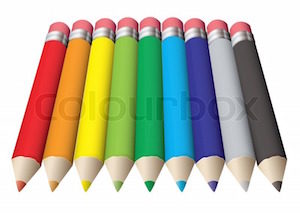 Revising and editing are two different things. Revision is about restructuring the text to improve how we want to convey our ideas more clearly for the reader. When revising, I may quietly read my writing to myself to hear the flow and assess its fluency. Editing is about combing through the text to repair conventions. To help separate the two, I sometimes revise with one colored pen and edit with another color.
Revising and editing are two different things. Revision is about restructuring the text to improve how we want to convey our ideas more clearly for the reader. When revising, I may quietly read my writing to myself to hear the flow and assess its fluency. Editing is about combing through the text to repair conventions. To help separate the two, I sometimes revise with one colored pen and edit with another color.
For students: Take a piece of writing you have drafted and model your revision and editing process. Do this under a document camera and project your demonstration on the whiteboard. This part of the writing process is so important. It also pays to do repeated shared demonstrations with student work during writing workshop.
Publishing
Whenever I submit a piece to an editor or publish it online, I expect it to be perfect. The editor may have further suggestions, which is great, but what I offer as a final product is a representation of my habits and pride as a writer. It is evidence of flow.
For bloggers, there is WordPress and everything else. WordPress is free for anyone who wants to publish their work online and share it via social media. For editors, Microsoft Word seems to be the common language when submitting completed work.
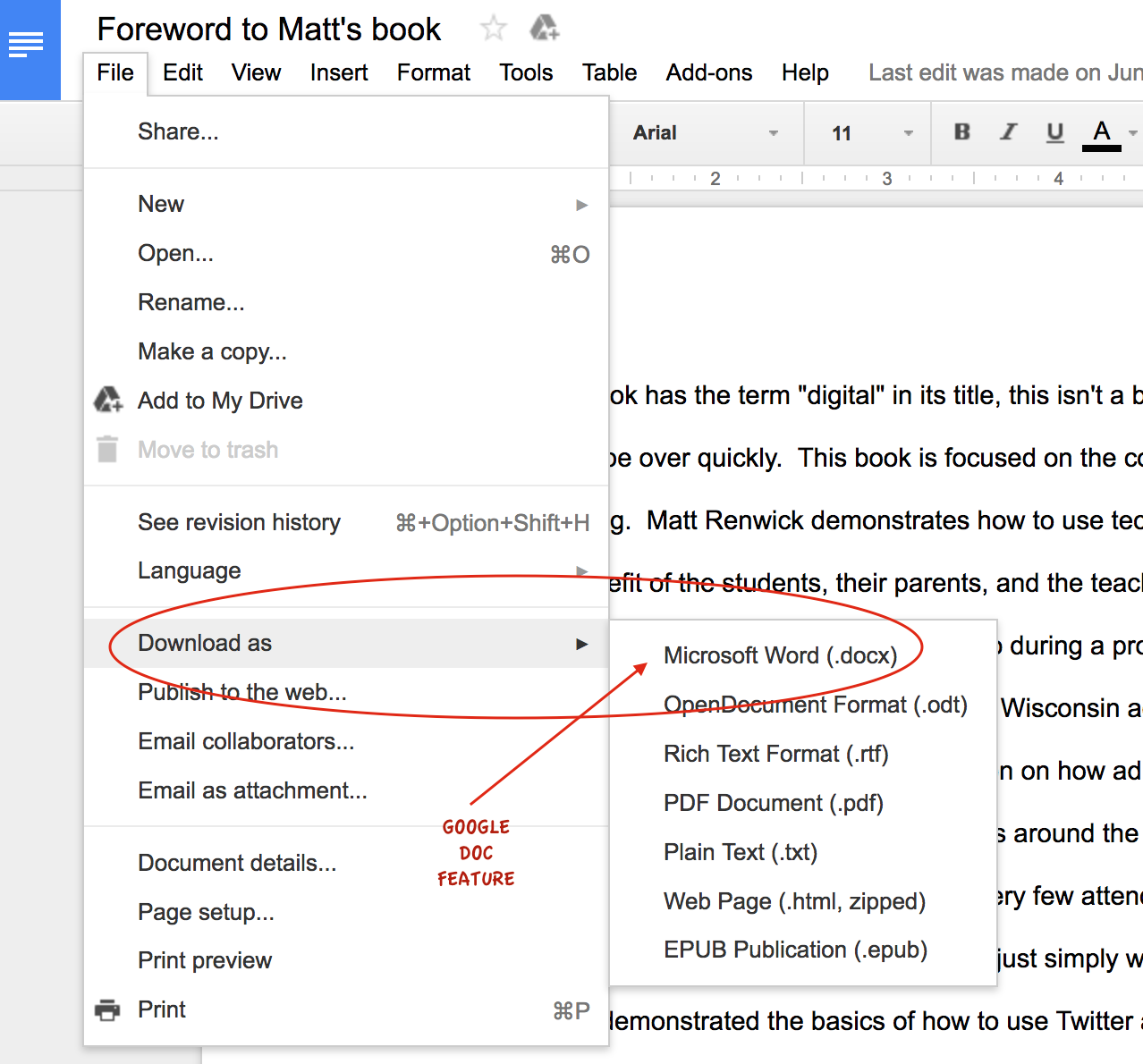
Work in Google Docs – Download MS Word
Most drafting tools offer the writer the ability to download their work in this format. If not, I copy and paste my text into this application. Google Docs is also becoming a more readily accepted format for editors. The commenting/suggesting feature is a benefit.
For students: Purchase a blogging subscription for students to post their final products. It’s worth the money. We spend so much on books for our classrooms libraries – why not find the funds for their writing lives too? Kidblog is a nice tool for elementary students. Edublogs and WordPress are powerful platforms for secondary students.
THE MORE I STICK WITH THIS WRITING ROUTINE, the more I’m finding flow in my writing life. Demonstrating the habits that help us achieve writing flow can guide our students to develop their own routines. The outcome can be a classroom where everyone becomes a writer for life.
__________
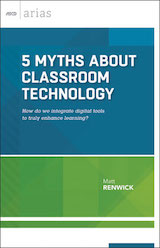 Matt Renwick (@ReadByExample) is beginning his 17th year in public education. He started as a 5th and 6th grade teacher in a country school outside of Wisconsin Rapids, WI. After seven years of teaching, he served as a dean of students at a junior high, which developed into an assistant principalship (and athletic director duties). As an elementary principal for the Mineral Point Unified School District, “I am enjoying the curriculum, instruction and assessment side of education.” Matt is the author of several books, including 5 Myths about Classroom Technology (ASCD Arias, 2015). He blogs at Reading by Example.
Matt Renwick (@ReadByExample) is beginning his 17th year in public education. He started as a 5th and 6th grade teacher in a country school outside of Wisconsin Rapids, WI. After seven years of teaching, he served as a dean of students at a junior high, which developed into an assistant principalship (and athletic director duties). As an elementary principal for the Mineral Point Unified School District, “I am enjoying the curriculum, instruction and assessment side of education.” Matt is the author of several books, including 5 Myths about Classroom Technology (ASCD Arias, 2015). He blogs at Reading by Example.


































